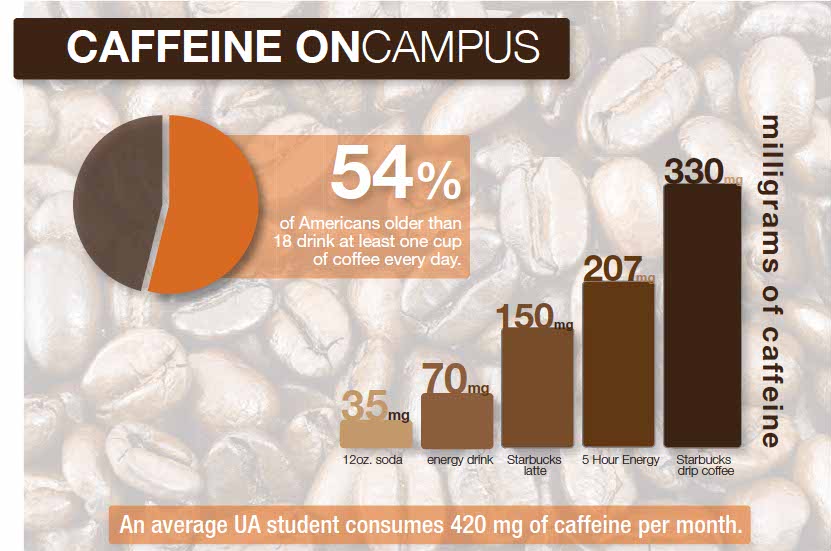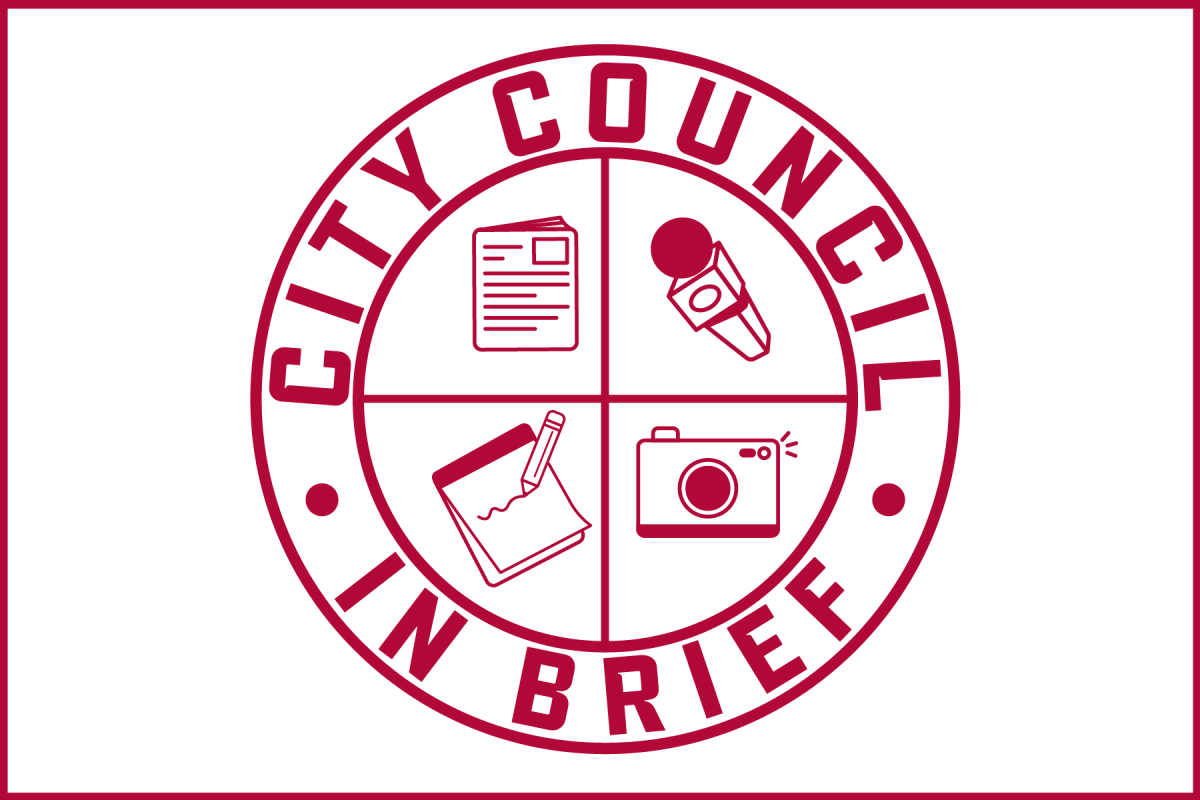By Jessica Smith and Danny Pelavin | CW Staff
The long lines at Starbucks in the Ferguson Center are indicative of the obsessive nature caffeine can bring. Cathy Andreen, director of media relations, said about 50,000 coffee drinks are sold from Bama Dining each month, and 47,000 soft drinks and energy drinks are sold each month at various locations on campus including Dunkin’ Donuts, Starbucks and other venues that sell coffee beverages.
Lori Greene, an instructor in the human nutrition and hospitality management department, said coffee is the most popular stimulant in the United States. Greene said an average of two cups of coffee a day is fine, but after a certain amount, coffee can lead to irregular heart beats and dehydration.
As for the positive aspects of coffee, Greene said it can help you mentally focus better. She said coffee does not provide you with more energy but acts as a stimulant and that getting enough sleep and eating regular meals are the best ways to maintain enough energy.
According to the Mayo Clinic, a 16-ounce Starbucks latte contains 150 milligrams of caffeine, a 16-ounce cup of Starbucks Pikes Place drip coffee contains 330 milligrams, and a typical 12-ounce soda contains about 35 milligrams. Energy drinks can contain anywhere from 70 milligrams, such as in a can of Red Bull or Monster, to 207 milligrams, such as in a bottle of 5-hour Energy. Greene said even though energy drinks have less caffeine than some other coffee type drinks, they have other negative aspects. Energy drinks have herbal products people don’t usually think about that aren’t usually regulated. She said some brands of energy drinks are now marketing themselves as beverages.
“Some brands of energy drinks have changed from marketing themselves as an energy supplement or energy drink to now being marketed as a beverage,” Greene said. “It really just depends on which energy drink you’re talking about and what’s included in them.”
According to a 2010 study by the National Coffee Association, 54 percent of Americans older than the age of 18 drink at least a cup of coffee every day. According to that same study, the average American older than 18 years old drinks 27.9 ounces of coffee a day, roughly equivalent to three small drinks from Starbucks, or 1 1/2 mediums from Dunkin’ Donuts.
Statistics obtained from the University do not differentiate between the different kinds of coffee drinks, soda and energy drinks, but the average amount of caffeine between a Starbucks latte and drip coffee would be 240 milligrams. If Bama Dining sells 50,000 coffee drinks per month, UA students roughly consume an average of 12 kilograms of caffeine in coffee drinks per month.
Assuming the average soda or energy drink contains about 55 milligrams of caffeine, UA students consume an average of about 2.5 kilograms of caffeine per month through those beverages.
Adding these two statistics together and dividing by the total student population at the University, the average UA student consumes about 420 milligrams of caffeine per month, or 14 milligrams per day. That obviously doesn’t account for the caffeine that students consume off campus.
Candace Allen, a freshman majoring in athletic training, said she drinks a Red Bull a day, maybe two depending on her workload.
“I drink coffee in the morning and coffee at night,” Allen said. “I tried the clean energy, exercise in the morning thing, but it just made me feel tired. I’d rather just drink caffeine.”
Allen said she is aware of the negative side effects of caffeine but hasn’t noticed any when she drinks it, so she isn’t worried.
“I know I drink more caffeine than the average person, but it doesn’t worry me,” Allen said. “It helps me focus, and I haven’t noticed any bad effects.”
She also said she tries to detox from caffeine every once in a while so she doesn’t become desensitized to it.
“I don’t really get jittery or headaches or anything,” she said. “I drink caffeine because it makes things easier, especially waking up in the morning. It’s part of my routine now.”









